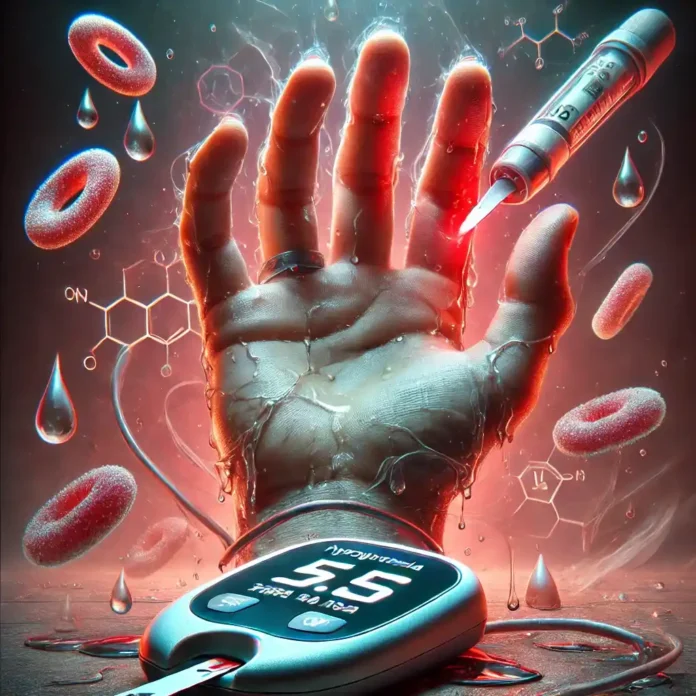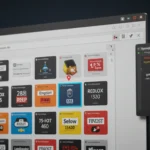Picture this: You’re going about your day when suddenly, you feel shaky, sweaty, and downright hangry. Your brain feels foggy, and you’re not sure if you’re about to cry or pass out. Sound familiar? You might be experiencing hypoglycemia, aka low blood sugar.
But don’t worry – you’re not alone, and we’ve got your back. In this blog, we’ll break down everything you need to know about hypoglycemia, from what causes it to how you can manage it like a pro. Let’s dive in!
What Is Hypoglycemia?
Hypoglycemia occurs when your blood sugar (glucose) levels drop too low, usually below 70 mg/dL. Glucose is your body’s primary energy source, so when levels dip, your body starts sending out SOS signals.
Who’s at Risk?
While hypoglycemia is most commonly associated with diabetes (especially if you’re on insulin or certain medications), it can happen to anyone. Other risk factors include:
- Skipping meals or eating too little
- Intense exercise without proper fueling
- Drinking alcohol on an empty stomach
- Certain medical conditions, like liver or kidney disorders
Symptoms of Hypoglycemia
Your body has a pretty dramatic way of telling you something’s wrong. Here are the most common symptoms:
- Mild to Moderate: Shakiness, sweating, hunger, irritability, dizziness, rapid heartbeat, and tingling lips.
- Severe: Confusion, slurred speech, blurred vision, seizures, or even loss of consciousness.
If you’ve ever felt “hangry,” you’ve experienced a mild form of hypoglycemia. But when it gets severe, it’s no joke – and it requires immediate action.
What Causes Hypoglycemia?
Understanding the “why” behind hypoglycemia can help you prevent it. Here are the most common causes:
Medical Conditions: Issues with your pancreas, liver, or kidneys can also lead to low blood sugar.
Too Much Insulin or Diabetes Medication: These can lower blood sugar too much if not balanced with food or activity.
Skipping Meals: Your body needs a steady supply of glucose, and skipping meals can disrupt that balance.
Intense Exercise: Physical activity uses up glucose, and if you don’t replenish it, your levels can drop.
Alcohol: Drinking, especially on an empty stomach, can interfere with your liver’s ability to release glucose.
How to Manage Hypoglycemia
The good news? Hypoglycemia is manageable. Here’s your action plan:
1. Treat It Fast
If you’re experiencing mild symptoms, follow the “15-15 rule”:
- Eat 15 grams of fast-acting carbs (like glucose tablets, juice, or candy).
- Wait 15 minutes and check your blood sugar again.
- Repeat if necessary.
2. Prevent It
- Eat Regularly: Don’t skip meals, and include a mix of carbs, protein, and healthy fats.
- Monitor Blood Sugar: If you’re diabetic, check your levels regularly, especially before and after meals or exercise.
- Carry Snacks: Always have a quick source of glucose on hand, like granola bars or fruit.
3. Know When to Seek Help
If symptoms are severe or don’t improve after treatment, seek medical attention immediately. Severe hypoglycemia can be life-threatening.
Long-Term Strategies for Hypoglycemia Prevention
If you’re prone to hypoglycemia, these tips can help you stay on track:
Wear a Medical ID: If you’re at risk of severe hypoglycemia, a medical ID can be a lifesaver in emergencies.
Work with Your Doctor: Adjust medications or insulin doses if needed.
Educate Yourself: Learn how different foods, activities, and medications affect your blood sugar.
Final Thoughts
Hypoglycemia might feel scary, but with the right knowledge and tools, you can manage it like a pro. Whether you’re diabetic or just prone to the occasional blood sugar dip, understanding your body’s signals is key to staying healthy and feeling your best.
So, the next time you feel that telltale shakiness, don’t panic – grab a snack, take a deep breath, and remember: you’ve got this.
Read more health and self-care blogs
Disclaimer
Sengideons.com does not host any files on its servers. All point to content hosted on third-party websites. Sengideons.com does not accept responsibility for content hosted on third-party websites and does not have any involvement in the same.













